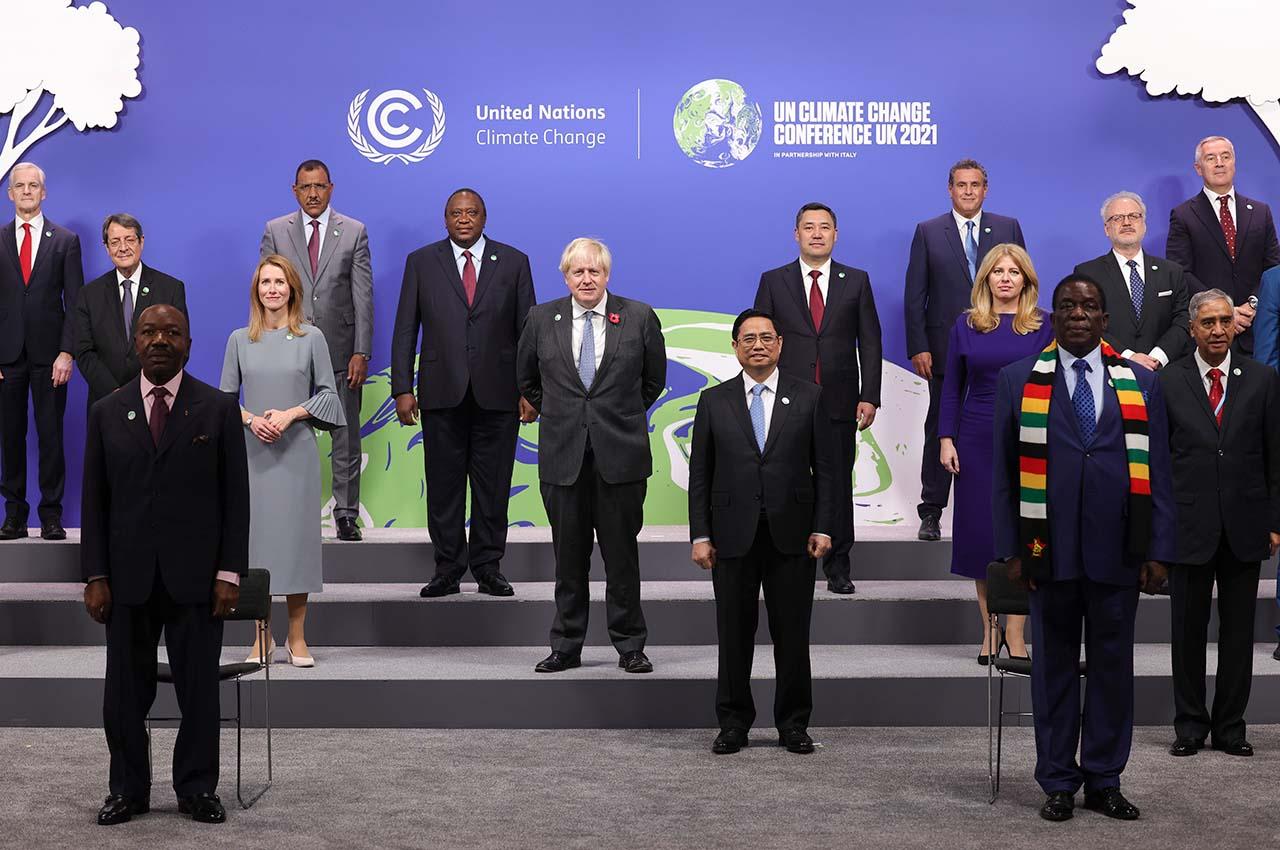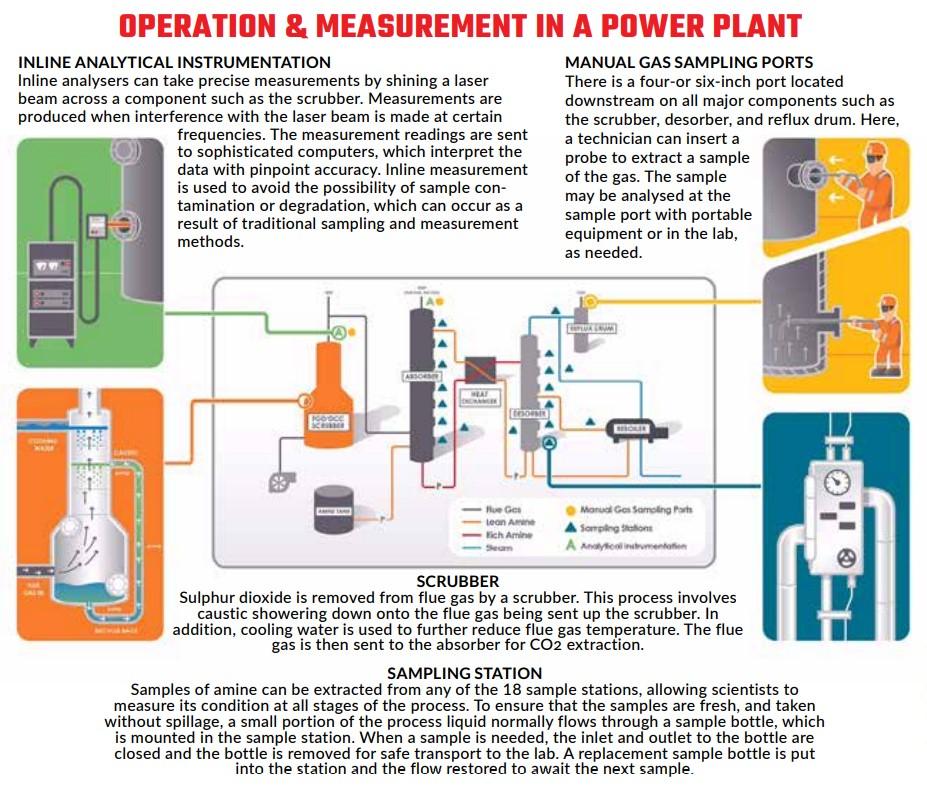The Glasgow Climate Pact—a commitment to reach a global net-zero emissions target by 2050—was adopted at the conclusion of the UN Climate Change Conference (COP26) in November 2021 at Glasgow, Scotland with the focus on keeping a 1.5o C global warming target within reach. Glasgow achieved some progress, but prevailing conditions and estimates suggest that despite commitments being made, the world, including India, is headed for 2.4o C warming. Earlier this year, the Intergovernmental Panel on Climate Change (IPCC) released its latest report, which said that the climate breakdown was happening faster than expected and that the window to take action was closing fast. The report called upon the governments and private sector players to take drastic action against climate change.
It pointed out that at current levels of climate change, many parts of the planet would become unliveable in the next few decades. The report got the UN secretary-general, António Guterres, to say, “I have seen many scientific reports in my time, but nothing like this. This is code red for humanity. We must combine forces now to avert climate catastrophe.” Available data points out that over 2010-19 average annual global greenhouse gas emissions were at the highest levels in human history. However, the awareness brought about due to unpredictable weather has slowed the rise. Without immediate and extensive emissions reductions across all sectors, limiting global warming to 1.5°C would be beyond reach, the report said.
The solution lies in reducing emissions in industry, which would involve using materials more efficiently, reusing and recycling products, and minimising waste. For industries like steel, building materials and chemicals, low to zero greenhouse gas production processes are in the pilot to the near-commercial stage, it said. These sectors account for about a quarter of global emissions. Achieving net-zero will be challenging and will require new production processes, low and zero emissions of electricity, hydrogen and, where necessary, carbon capture and storage.
The report further said that limiting global warming will require major transitions in the energy sector. This will involve a substantial reduction in fossil fuel use, widespread electrification, improved energy efficiency, and the use of alternative fuels (such as hydrogen). “Having the right policies, infrastructure and technology in place to enable changes to our lifestyles and behaviour can result in a 40% to 70% reduction in greenhouse gas emissions by 2050. This offers significant untapped potential,” said IPCC Working Group III Co-Chair Priyadarshi Shukla. “The evidence also shows that these lifestyle changes can improve our health and well-being.”

The IPCC is an intergovernmental body of the UN, representing 195 governments, responsible for providing policymakers with scientific assessments on the risks and implications of climate change. Incidentally, only half of IPCC member countries have adaptation measures worked into their climate strategies. These include flood barriers, drought-resistant crops, and early-warning storm systems. The report states that such measures may not be sufficient to prepare for future threats and that the world has already gone past some tipping points. COP27, to be held in Sharm el-Sheikh, Egypt in November 2022, will certainly turn the spotlight on scaling up finance for adaptation of some preventive measures.
The IPCC report says that global emissions must halve by 2030 and reach net zero by 2050. Given the enormous inequity in emissions around the world, the Organisation for Economic Cooperation and Development (OECD) countries must then reach net zero by 2030, China by 2040, and India and the rest of the world by 2050. At Glasgow, Prime Minister Narendra Modi declared that India will achieve the net-zero target by 2070 and announced a five-fold strategy towards it.
The five points include increasing non-fossil energy capacity to 500 gigawatts (GW) by 2030 to meet 50% of its energy requirements from renewable sources, which is expected to bring down the total projected carbon emissions by one billion tonnes by the end of the decade and reduce the carbon intensity of the economy by 45%. Experts point out that this commitment by India is rather like running the talk than walking the talk. India was pointed out as the world’s third highest polluter in 2019, but its scale of emissions, 2.88 CO2 gigatonnes (Gt) as compared to the highest polluter (China at 10.6 Gt) and second highest (United States at 5 Gt), is not comparable by any stretch. More important, India has a huge need to grow its economy and to meet the energy needs of millions of its people. So, it is not just a challenge for India to achieve but also a challenge for the world to follow suit.
The solution lies in reducing emissions in industry, which would involve using materials more efficiently, reusing and recycling products, and minimising waste
Driven by climate change mitigation ambitions, the changing narratives around the prospects of implementing CCS and CCUS (Carbon Capture and Storage and Carbon Capture, Utilisation and Storage) technology across the globe, including in India, are evident. With countries ambitiously pledging carbon neutrality, the narrative around CCS and CCUS technologies has been regaining momentum in the Indian and global contexts. In India, however, this technology is far from becoming mainstream. But the government and industry are trying to better understand the techno-economic feasibility and scalability of this technology.
It is clear that private Indian industries and public sector undertakings (PSUs) need to take a lead in promoting the CCS facilities while recognising the need to stay carbon-neutral in the broader context of sustainability and competitiveness. Experts point out that after lying dormant for a decade, the CCUS debate has been reignited in India’s climate change mitigation conversations. The discussions were first initiated in 2007, but lost momentum thereafter.

With India joining Mission Innovation in 2015, CCUS has regained momentum as an essential technology in the presence of fossil-based industries. Though CCUS could play a significant role in the power and industrial sectors, at present the power sector in the country relies heavily on renewables. In long-term deep decarbonisation scenarios, CCUS could play an important role to achieve net-zero emissions in energy systems. With the growing acceptance of challenges and the need to mitigate the industrial sector emissions, CCUS is being adopted as a pilot by many Indian industries. CCUS faces many challenges in India and there is a need to develop and evolve an ecosystem supporting CCUS facilities in the Indian market. The success of CCUS is not only being hampered by the available technology but also by the lack of a policy ecosystem. The ecosystem should be encouraged and built around essential pillars like R&D, policy, finance, and governance. Except for MI-DBTDST (Mission Innovation on Clean Energy, Department of Bio-Technology, Department of Science and Technology) projects, no focused research is being facilitated for CCUS.
It is clear that private Indian industries and public sector undertakings (PSUs) need to take a lead in promoting the CCS facilities, while recognising the need to stay carbon-neutral
Environmental experts point out that an India-specific comprehensive analysis needs to be undertaken to understand the challenges and the local solutions that are possible. Research is also required on the policy front to understand the changing requirements and implications of policies on the role of CCUS, especially in the industrial sector. The CCUS technology is relatively new to India compared to the developed nations and hence it requires more comprehensive research, action, and discussion to keep the debate going while dissecting India’s low-carbon story. A report by the Indian Council for Research on International Economic Relations (ICRIER) says that India had identified CCUS as a priority area in its Second Biennial Update Report that was submitted to the United Nations Framework Convention on Climate Change (UNFCCC). India is also an active participant in the Carbon Capture Innovation Challenge under Mission Innovation (MI) and launched a funding opportunity in 2018-19 under MI for carbon capture, sustainable biofuels and converting sunlight.
The idea was to aid collaboration between Indian researchers and other MI member countries and a budget of $17 million has been sanctioned for 47 projects. Additionally, as of July 2020, under the Indo-US Strategic Energy Partnership (SEP), CCUS technologies were among the common areas that had been jointly identified for collaboration. The report says that direct air capture (DAC) refers to a technology that captures carbon from the atmosphere which can then either be stored permanently in geological formations or used to produce fuels, chemicals, building materials, and so on. In the case of permanent storage, CO2 is removed from the atmosphere, generating negative emissions. However, the use of captured carbon can result in re-release of CO2—for instance, when synthetic fuels produced from it are burnt. While this would not generate negative emissions, it would result in some climate benefits when fossil fuels are replaced by synthetic ones.

Research is also required on the policy front to understand the changing requirements and implications of policies on the role of CCUS
Carbon capture utilisation (CCU) refers to the recycling of captured carbon to produce economically valuable products or services. Utilising carbon can take one of two forms, i.e., it can be used directly without conversion or indirectly with conversion. Captured carbon can be used to produce oil via enhanced oil recovery (EOR) processes. Alternatively, it can be used to produce fuels (methane, methanol, aviation fuels, gasoline, etc.), construction material, chemicals, plastic, and algae-based products such as fertilisers and animal feed. The report further states that the costs associated with carbon capture can be partially offset by the revenue generated from the utilisation measures. Each carbon utilisation pathway differs from the other in terms of characteristics with respect to technical maturity, market potential, economics, and carbon reduction potential.
Carbon capture storage (CCS), on the other hand, prevents the release of CO2 into the atmosphere by capturing produced CO2 from point sources, transporting it to preselected locations and storing it. Bioenergy in conjunction with CCS transforms into a negative emissions technology and can be used to address industrial sector emissions. The uptake of CCUS has been relatively slow in the country, primarily because of concerns regarding geological CO2 storage, high costs and uncertainties regarding such technologies. Despite the scepticism associated with CCUS, some independent companies have ventured into this field, the report says.

For instance, in July 2019, the Oil and Natural Gas Corporation (ONGC) and Indian Oil Corporation Ltd (IOL) signed a Memorandum of Understanding (MoU) to jointly work towards reducing carbon emissions through the implementation of CCUS at the Koyali Refinery in Gujarat. Similarly, Dalmia Cement announced its plans to build a 5,00,000-tonne carbon capture cement plant in Tamil Nadu. As of September 2019, it had signed an MoU with UK-based Carbon Clean Solutions (CCSL) for technology and operational services for running the plant.
While some small-scale CCS cement plants exist in the EU and China, a plant of this capacity is the first of its kind. Dalmia Cement happens to be the first cement company in the world to have committed to becoming carbon negative by 2040. Additionally, a plant situated in the industrial port of Tuticorin captures CO2 generated from its boiler and uses it to produce baking soda, which has a wide market base in industries such as glass making, detergents and paper products. Small-scale capture and utilisation plants for fertilisers are also in the works.
Captured carbon can be used to produce oil via enhanced oil recovery (EOR) processes. Alternatively, it can be used to produce fuels

Experts from India and the US discussed the challenges and opportunities to combat climate change through technology-led CCUS solutions at the Indo-US Scoping Workshop on Carbon Capture this January, jointly organised by DST India and DoE USA. Dr S. Chandrasekhar, secretary, Department of Science & Technology (DST), pointed out that at COP26, Prime Minister Modi put forth the country’s remarkable performance as well as ambitions to meet the climate goals despite being one of the fastest growing economies in the world. “Under a strict climatic regime, we can realise the identification and adoption of a right balance of portfolio of emission curtailment technologies. Carbon Capture, Utilisation and Storage (CCUS) is among such key pathways to reduce emissions while continuing to develop sustainably at an unprecedented pace. CCUS clearly aligns with five of the seventeen Sustainable Development Goals (SDGs), namely, climate action; clean energy; industry, innovation, and infrastructure; responsible consumption and production; and partnerships to achieve the goals,” he said at the first workshop on carbon capture.
Chandrasekhar highlighted the recent initiatives of the DST towards technology-led RD&D in the area of CCUS. He said that DST India had become part of the transnational multilateral platforms such as MI and Accelerating CCUS Technologies (ACT) along with other member countries, including the US, for collaborative RD&D.
Dr Jennifer Wilcox, acting assistant secretary, Office of Fossil Energy and Carbon Management (FECM), US Department of Energy (USDOE), gave an overview of US initiatives regarding clean energy and emphasised it is a global crisis and requires a global response in clean energy technologies and an international partnership to achieve carbon net-zero status. She hoped that the workshop would provide an opportunity to broaden and deepen collaborations and engagements.


























